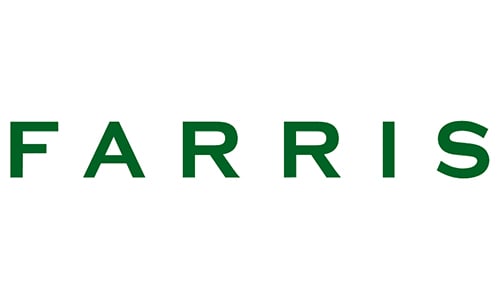What is Representation and Warranty Insurance (RWI)?
Understanding RWI requires understanding the role of representations and warranties in an M&A transaction. Essentially, representations are assertions of fact made in the M&A agreement that the other party relies on as its basis for entering into the transaction; while warranties are promises of indemnity if an assertion of fact turns out to be false. Although representations and warranties are distinct legal concepts, each giving rise to different legal remedies, representations and warranties have become somewhat synonymous in practice. Most purchase agreements provide that one party “represents and warrants” various matters to the other party. Indemnities, in turn, are contractual mechanisms for an aggrieved party to seek recourse in the event of a breach of a representation or warranty. When an RWI policy is in place, in the event of a breach of a representation or warranty, the policy replaces or supplements the contractual indemnity and the insurer pays out instead of the breaching party. Within that framework, RWI is effectively a tool that protects the insured party against the financial consequences of a breach of a representation or warranty, subject to the limits of the RWI policy.
In general, there are two types of policies: buy-side policies and sell-side policies. Buy-side policies are purchased by the buyer and claims are made directly to the insurer. Sell-side policies are purchased by the seller and when claims are made against the seller by the buyer, the seller in turn files a claim with the insurer. RWI policies typically cover most representations and warranties, with some exceptions and exclusions (discussed below), and contain retentions (being the aggregate deductible) and premiums like other insurance policies.
Why is RWI a good idea for both buyers and sellers? Are there downsides?
RWI provides increased flexibility in the negotiation process and can benefit both the buyer and seller in a variety of ways.
In M&A deals, buyers often seek extensive representations and warranties in order to protect their investment while sellers seek to minimize representations and warranties to limit their liability exposure. Additionally, while buyers typically want to hold back funds as security in the event of a breach, sellers hope to access their transaction proceeds as soon as possible. An RWI policy helps bridge the gap between the buyers and sellers.
The main benefit to buyers is that an RWI policy replaces or enhances the indemnification provided by the seller in the contract. This is particularly significant where a seller has leverage to negotiate a limited indemnification package, or where the buyer is worried about its ability to recover from the seller post-closing. Other potential benefits include extending the survival period of the representations and warranties so the buyer has more time to discover breaches and recover losses; enhancing the appeal of the potential buyer’s bid in a competitive auction; minimizing friction between buyers and sellers where the seller principals continue to have a relationship with the business post-closing (i.e. minority owners, employees, landlord etc.); and increasing the likelihood of closing by avoiding a protracted and contentious negotiation (although lawyers always seem to find a way!).
Specific benefits for sellers include a reduction or elimination of, or protection for, its indemnity obligations in the event of a breach, and fewer contingent liabilities associated with the sale. In addition, as a key benefit to sellers, RWI typically also enables the seller to receive a greater portion of the sale proceeds at closing as a much smaller amount of the purchase price is typically put into escrow than would traditionally be the case (typically around 0.5% - 1%, reflecting the retention amount under the RWI policy, as opposed to approximately 10% in a transaction without RWI).
RWI adds to the cost of the transaction, and the RWI process typically takes several weeks to negotiate and finalize and involves: (i) engaging a broker who charges a commission; (ii) the prospective insurer conducting a detailed underwriting review with a non-refundable charge to cover diligence; and (iii) negotiating the final terms of the policy. RWI will also require payment of a premium and, in the event of a claim, an aggregate deductible referred to as the retention amount.
A potential downside to RWI for a buyer is the narrower scope of protection offered versus a seller’s standard escrow. For example, RWI policies don’t cover contractual covenants or misrepresentations of which the insured party had actual knowledge; nor do they generally cover representations relating to environmental matters or accrued tax liabilities. Most RWI policies also contain standard exclusions for fines and penalties, purchase price adjustments and forward-looking statements, as well as deal-specific exclusions identified by the insurer during the underwriting process. For buy-side RWI policies, buyers generally purchase RWI coverage in an amount equal to only a percentage of the deal value, leaving them exposed to extraordinary losses in the event of breaches by the seller causing damages that exceed the coverage limit and are not, or cannot be, covered by the seller. For sell-side policies, sellers generally purchase RWI coverage in an amount equal to either the cap of their basic indemnification obligations, or some percentage of deal value, leaving sellers exposed to cover damages not covered by the RWI policy due to exclusions under the policy or where damages are in excess of the coverage limits and recoverable by the buyer as against the seller under the contract.
What are some trends that have arisen in the RWI space as it has become more popular in Canada?
As RWI increases in popularity in Canada, developing trends include expansion of the scope and use of policies, the engagement of specialists in the claims process, and a focus on cybersecurity.
Over time, coverage has become available in the Canadian RWI market for a wider variety of transactions. Once thought to be an option mainly for large-scale M&A, RWI is recently becoming more common for deals involving mid- and lower mid-market companies. RWI is also being used more frequently for purely domestic transactions and where no private equity fund or financial investor is involved. RWI is also available in public company M&A, but to date is rarely used in such circumstances.
Developments in RWI use and scope are likely due to the increased number of RWI providers in Canada generally, in turn leading to greater competition and coverage availability.
As RWI has become more prevalent in Canadian M&A transactions, insurers are also increasingly using specialized professionals, like legal counsel and forensic accountants, to assist with claims. This increase is likely due to most claims resulting from alleged breaches in compliance with laws, misstated financial statements and taxes.
Another trend in M&A transactions is an increased focus on cybersecurity and privacy. Buyers are emphasizing disclosure relating to protection from data breaches relating to the target company, its customers, and other parties, and expanding their due diligence to include an audit of the target’s data protection compliance. RWI providers are likewise focusing on key risks such as cybersecurity and privacy and expect robust due diligence on these matters, otherwise they are likely to be excluded from coverage.
What role does due diligence play and what should lawyers pay extra attention to when working with RWI and insurers?
Due diligence is critical
Due diligence plays an important role in both delineating and maintaining coverage under an RWI policy.
A buyer purchasing a business will want to make sure it’s getting what it bargained for. Since representations and warranties are essentially statements of fact a seller makes to induce the buyer to purchase their business, the accuracy of these statements is paramount. The buyer will want to conduct comprehensive due diligence to make sure it is aware of the target company’s risks and will want to ensure that the agreement includes representations and warranties that accurately reflect their understanding of the true state of affairs of the target’s business.
Insurers will want to confirm that an extensive due diligence process was followed when crafting exclusions and calculating premiums. Lawyers will need to pay attention to the timing of any RWI policy as, if a state of affairs is known or ought to have been known by the insured prior to the policy’s inception, it will be excluded from coverage regardless of a contrary representation in the contract. Counsel should be mindful that the party purchasing RWI will also need to share its own due diligence reports with the insurer (typically on a non-reliance basis). This creates an added emphasis on the due diligence process, and lawyers will want to endeavour whenever possible to resolve any issues prior to sending the report. Unresolved diligence issues will likely not be covered under the RWI policy and lawyers will then want to ensure that these risks are covered by a separate seller indemnity or reflected in the purchase price instead.
Align the policy with the contract
When dealing with RWI, lawyers also need to be familiar with how this form of insurance operates and pay close attention to whether the policy is intended to supplement or replace the indemnity in the contract. If sellers have sufficient leverage, they may insist buyers look solely to RWI instead of traditional indemnification from the sellers under the M&A agreement in respect of breaches of the sellers’ representations and warranties.
When RWI replaces a seller’s indemnity entirely, the buyer’s lawyer should consider whether the seller’s representations and warranties survive closing. It is also critical to review the policy’s definition of loss since the policy may not be adopting a definition from the contract itself. In this situation, insurers will also focus more on the seller’s disclosure schedules which will determine potential exclusions to the representations and warranties in the agreement. The lawyer should pay close attention to any gaps in coverage and consider whether a separate stand-alone indemnity can be negotiated to mitigate the associated risks.
When RWI supplements a seller’s indemnity, insurers will create a bespoke insurance policy for the deal that aligns with certain elements of the contractual indemnification provisions. This includes matters in the agreement like materiality and other qualifiers, the definition of loss, and other limitations to indemnification. Lawyers will want to make sure the policy coverage accurately reflects the contractual indemnities, and that there are no unexpected gaps in coverage.
Pay close attention to representations and warranties
Since an RWI policy insures against breaches of the representations and warranties contained in the contract (and, in certain cases, other closing documents and ancillary agreements), it is important for a lawyer representing a buyer to ensure these assertions are as broad as possible and not to draft limitations into the indemnification from the seller. The buyer’s lawyer should also consider whether any exclusions proposed by the insurer can be narrowed with additional diligence before the policy is bound.
While representing the seller, it is still important to pay close attention to the language in the representations and warranties and related disclosures in the disclosure schedules since sell-side policies won’t include coverage for fraud or any representations that are excluded for coverage. If the seller’s breach is found to be deliberate, reckless, or wilfully blind the insurer can seek recovery against the seller regardless of whether there is a subrogation clause in the policy. In addition, where the seller is responsible for all or any portion of the retention amount, the seller will be liable for breaches up to such limits, again enforcing the importance of a detailed review of the representations and warranties by the seller’s counsel with the seller in advance of signing the M&A agreement.
Consider who pays
Finally, though not exhaustively, it’s important for counsel to either party to know that a party is planning to use RWI at the time of negotiating a bid so the cost can be factored into the purchase price. Lawyers should consider both: (i) who pays for the insurance; and (ii) who pays the retention under the policy in the event of a claim (including whether there is to be an escrow reflecting the seller’s portion of the retention amount). It is not uncommon for these costs to be shared between the buyer and seller.
Any further insights to share?
As the use of RWI in Canada continues to grow in popularity, it’s important for dealmakers to understand when and how to acquire a policy to ensure their transactions remain protected and competitive.
Process
It is ideal, where possible, to involve a broker and insurer early in the negotiation process so that they have as much deal information as possible. If RWI is to form part of an auction bid, the buyer may want to establish its potential scope and cost even earlier.
In most transactions, the buyer or seller engages an insurance broker to help select the best provider for the deal. The broker conducts a high-level review of the transaction and solicits quotes from potential insurers. The broker charges a commission for this service based on a percentage of the coverage limit (usually, 0.5-0.75%) or of the premiums (usually, 10-20%). Once an insurer is selected, a non-binding indication letter is negotiated subject to change as a result of the insurer’s due diligence.
The next step is the insurer’s detailed due diligence and underwriting process. The insurer will investigate whether the transaction has involved proper disclosure by the seller, due diligence by the buyer, and good faith negotiation by the parties. They will require robust access to deal documents, data rooms, due diligence reports, disclosure schedules and other company information, and may engage experts such as M&A lawyers and tax specialists in their review. The insurer charges a non-refundable underwriting/due diligence fee for this process.
Once the insurer is satisfied with the findings of the due diligence and underwriting process, the insurer and insured negotiate the terms of the RWI policy, including any deal-specific exclusions. The policy is typically engaged once several conditions are met including the signing and closing of the transaction, payment of premiums, and delivery of executed copies of the agreement.
Lawyers should also understand how the claims process under the RWI policy functions in conjunction with the indemnification provisions in the M&A agreement, so they can properly advise their clients.
Take-away
RWI is a useful tool for both buyers and sellers to re-allocate, or protect against, unknown business risks in an M&A transaction and can serve to bridge the gap between them where a traditional indemnity structure is not palatable to the parties involved. With the growing prevalence of RWI in M&A transactions in Canada, lawyers and other advisors should ensure they are knowledgeable as to implications of RWI on all stages of the lifecycle of an M&A transaction and how to best use RWI to serve and protect the needs of their clients in M&A transactions.
***

Rob Veitch is a Partner in Farris’ M&A and securities groups practicing out of Farris’ Vancouver and Kelowna offices. Rob regularly advises clients on complex public and private mergers and acquisitions, financings and other corporate finance and securities matters, including significant experience in cross border transactions.
***
 Matthew Lawson is Senior Counsel in Farris’ Vancouver and Kelowna offices. Matt’s areas of expertise include mergers and acquisitions, corporate commercial law, equity and debt financing, and securities matters. He works with private companies as well as public and institutional clients across various industries, and his practice frequently involves cross-border considerations.
Matthew Lawson is Senior Counsel in Farris’ Vancouver and Kelowna offices. Matt’s areas of expertise include mergers and acquisitions, corporate commercial law, equity and debt financing, and securities matters. He works with private companies as well as public and institutional clients across various industries, and his practice frequently involves cross-border considerations.
***
 Saylor Preston was a 2023 Summer Articled Student at Farris. Saylor is currently finishing his final year of law school before returning to complete his articles with the firm in 2024.
Saylor Preston was a 2023 Summer Articled Student at Farris. Saylor is currently finishing his final year of law school before returning to complete his articles with the firm in 2024.





